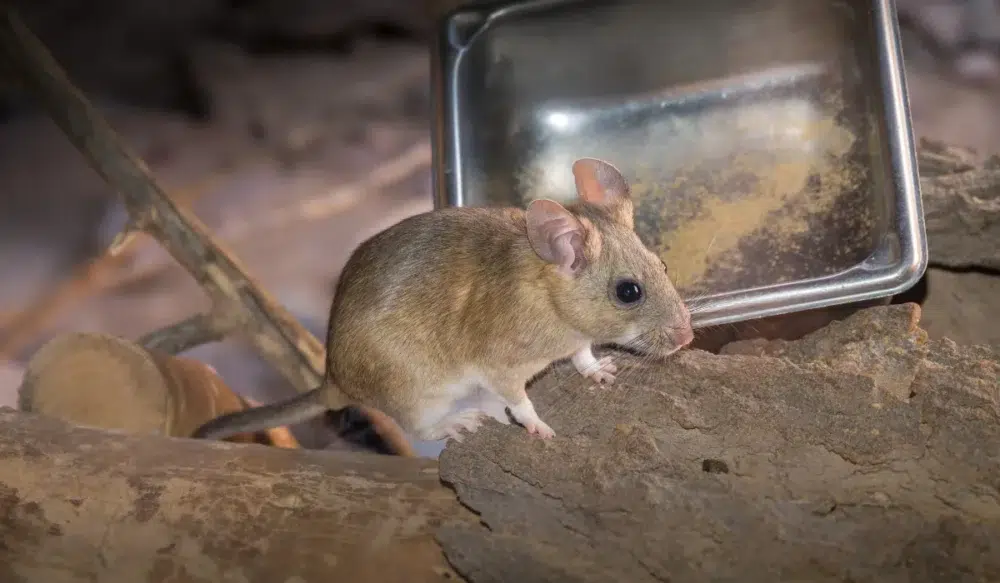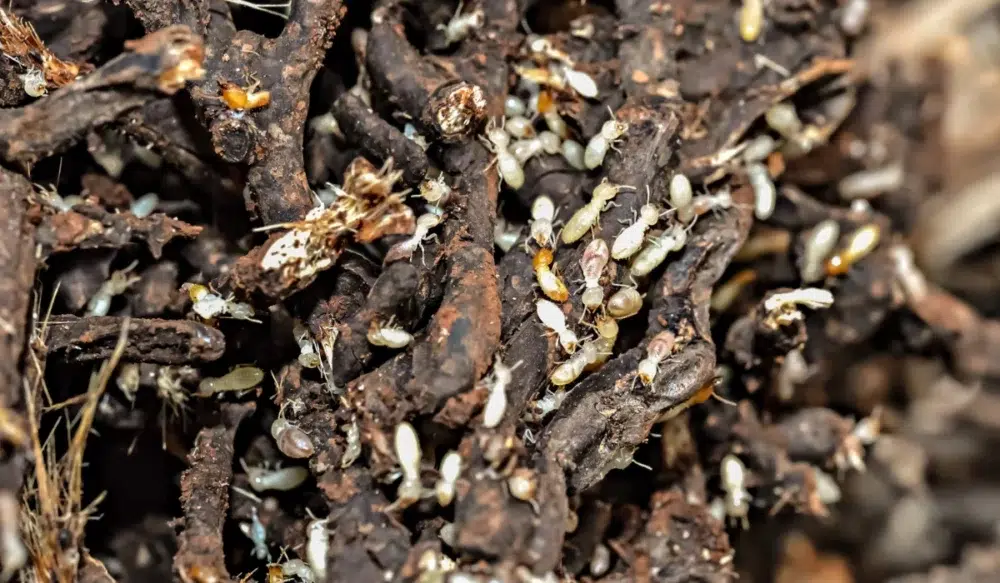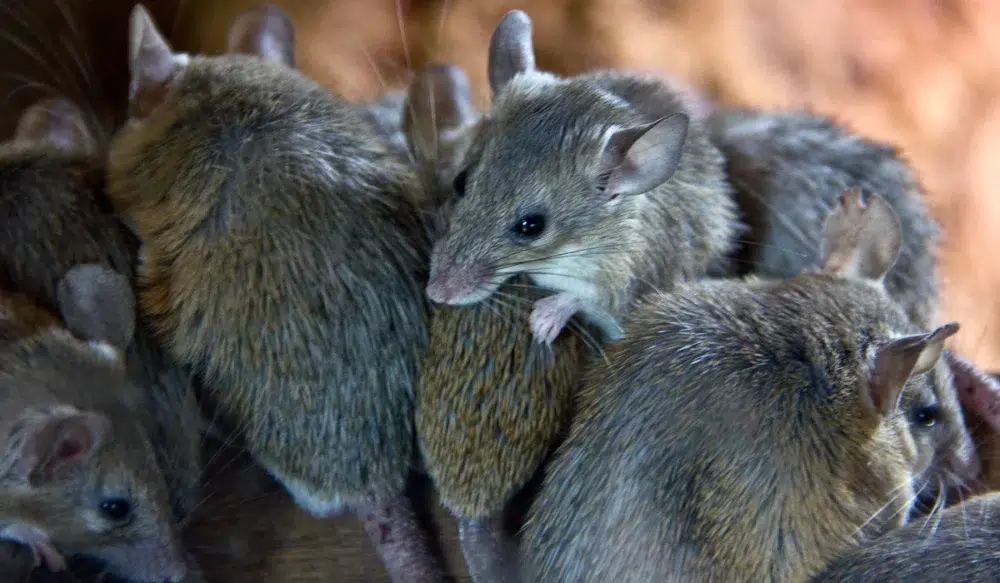Few things are as disheartening as finding out you have had termites eating your home for years, yet many Chandler property owners have gotten this news and wished that had gotten on top of their termite control. The easiest way to stay ahead of termites and avoid termite damage is with professional termite pest control in Chandler. But there are also ways you can protect your property yourself. Sometimes it is better to do something imperfectly than to not do it at all, so if you’re not ready to get professional control, use the tips in this short article to help you detect active termites and deter termites from selecting your property. If you want to know how Green Home Pest Control stops termites in their tracks, stick with us to the end.
What Do Termites Look Like?
Most of the time, you’re not going to see termites. Termite workers make up the largest portion of the population in a subterranean termite colony, and workers live their entire lives in utter darkness. They don’t even like to come out into the moonlight. But there is one kind of termite you might see. It is called a swarmer. We’ll look at what workers and swarmers look like and how you may detect them.
Swarmers are winged reproductive termites. They’re called swarmers because they gather into a swarm when they mate. The mating process happens quickly, so you’re not likely to see these termites for long. But if you’re lucky and you know what they look like, you may catch them.
Swarmers are about ? of an inch in length. That is considerably small. Keep this in mind. When a tiny, winged insect lands on you while you’re in your yard, take a moment to examine it closely. It might be a termite swarmer.
Swarmers have long wings that are a stretched teardrop shape. These wings stack on top of each other and hang past the end of the termite’s abdomen. You should easily notice that the wings are white and they are rounded at the tips.
Swarmers prefer to emerge outside. You’ll likely see them in shaded and humid areas in your yard. If you find a termite swarm in your house, you won’t miss it. These insects are quite noticeable when they are gathered together in a confined space.
Workers are the termites that eat the wood in your home. No other termite in a colony feeds on wood and other termite food sources. All the termites in a colony get their sustenance from the workers, so you’ll likely find termite workers underneath wood in your yard. A few areas to check are dead branches, scrap wood, and campfire wood. Here are a few character traits to consider.
A worker termite is pale in color.
It is roughly ? of an inch in length.
Many people describe termites as “fat white ants.”
You might pick a dead branch up, see workers on it, and think they’re maggots. It is an easy mistake to make. Even though you may not want to, examine them closely and look to see if they have six legs. Maggots don’t have legs. You’re also not likely to find maggots on wood in your yard.
Of the two, swarmers are easier to detect because they are attracted to light and may appear during the day. Workers stay hidden and will quickly hide from view when exposed. Keep this in mind as you watch for signs of termites in your yard. Here is another fact to consider.
Flying Termites Could Be The First Warning Sign
Since workers stay hidden, you’ll likely see swarmers first. Unfortunately, the appearance of termite swarmers is often misinterpreted or not seen at all. Let’s look at each of these issues.
Why do Chandler residents misinterpret the sign that termite swarmers represent? There are many reasons.
Swarmers don’t pass through yards. If you see swarmers, it is a warning sign of a nest that is on your property or near your property. The reason is that swarmers don’t travel far from the nest that created them. It is not wise to ignore the appearance of swarmers in your yard.
Swarmers have no reason to get into your home. They are attracted to light and prefer to emerge from their nests outdoors. Finding them inside is a warning sign of a severe infestation because it indicates that the nest is next to or underneath your home.
Whether you see swarmers indoors or outdoors, you should know that it takes more than three years for a nest to produce swarmers. That means your property may already have termite damage.
Why are swarmers not seen? Winged reproductive termites have a job to do. They emerge from the nest to find a mate and establish new nests. The mating process takes less than an hour. After that, the swarmers shed their wings and disappear into the ground to start a family. While most will not survive this process, the few that do will add to your termite problems.
Six Tips To Stay Ahead Of The Termite Problem
Long before termites damage your property, there are ways you can prevent the damage. We touched on one. It is critical to brush up on Chandler area termite identification. You need to know what termites look like so that you can recognize them when you see them in your yard or home. Here are six more tips to help you prevent a termite problem.
1. Wings
The wings shed by termite swarmers are sometimes the only warning sign. You may find them on the ground around your home, on your back deck, or on interior window sills. You may also find them stuck in spider webs.
2. Shelter Tubes
Subterranean termite workers create mud structures above ground to guard against dehydration and to keep them out of the light. These structures are typically the width of a pencil and look like a river flowing up from the ground, splitting as it goes. You may also find them in dark and humid voids around or underneath your home.
3. Brush Piles
Termites eat wood and have a preference for all-natural, decaying wood sources. A dead branch is like a succulent ribeye steak to a termite. Refrain from collecting dead branches and stacking them in a pile on the ground. Doing so will attract termites and cause a termite colony to grow quickly in response to this desirable food source. It is best to store branches in a bin or on a rubber mat to prevent worker termites from having direct access.
4. Wood-To-Soil Contact On Structures
You want subterranean termite workers to create mud tubes to get to wood sources because it will alert you to their presence. Therefore, wood-to-soil contact on structures must be addressed. Consider wooden fence posts, deck supports, and skirting. Some fixes for these are to replace wood fences with vinyl, put deck supports on concrete piers, and trim skirting with metal flashing.
5. Moisture Control
Worker termites are attracted to moistened soil. It is essential to address all moisture problems on your property. Here are a few examples:
Clear out debris in your gutters.
Repair broken downspouts or splash blocks.
Remove unnecessary plants from your landscaping.
Water your plants early in the morning to allow the sun time to dry the moisture.
Fix spigots that leak.
A dry perimeter around your home has the added benefit of preventing wood rot, which is also attractive to termites. It is a win-win.
6. Damage
It is rare to see the damage caused by subterranean termites. Most of the damage they do is on the inside of wood. But you may get lucky and see damage to wood that is in areas of high humidity and near the ground. You’re also more likely to see damage if you have not yet addressed wood-to-soil contact. Look for trenches in wood and the appearance of mud on wood.
Routine monitoring is the bedrock of termite damage prevention if you are not trained in the successful application of termite control products. For assistance with termite control in Chandler, contact Green Home Pest Control.
Professional Termite Control In Chandler
Your Green Home Pest Control service team uses the most trusted method for termite control. Our certified technicians install a termiticide barrier around structures to keep termites out. The barrier we install is undetectable to termites, so they are unable to avoid it. When they pass through the material, they share it with other termites during the grooming process. One by one they acquire the active ingredient, leading to colony elimination. Along with the skillful application of professional-grade termiticides, your technician will perform a yearly inspection to ensure your termite control is getting the job done.
If you have questions or would like to request service for your Chandler home or business, reach out to us. It is always best to get ahead of termite damage. Let our friendly and experienced team help.
RELATED: How To Identify And Get Rid Of A Termite Infestation In Your Chandler Home



